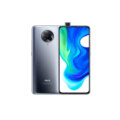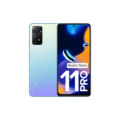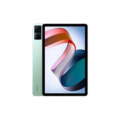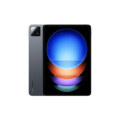Xiaomi 11T


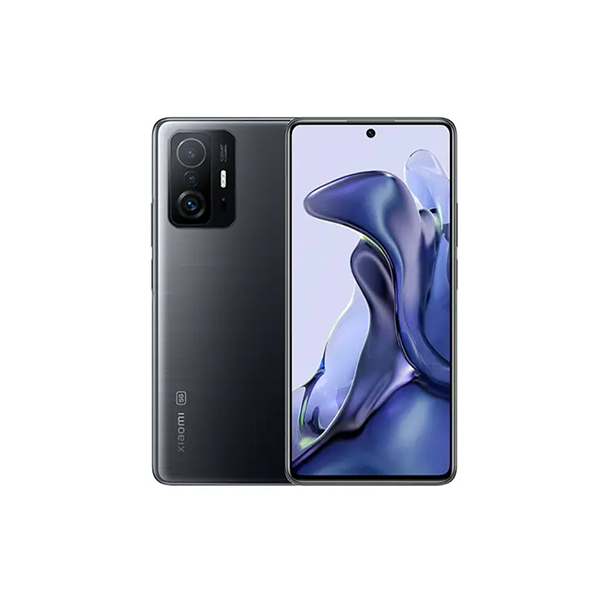
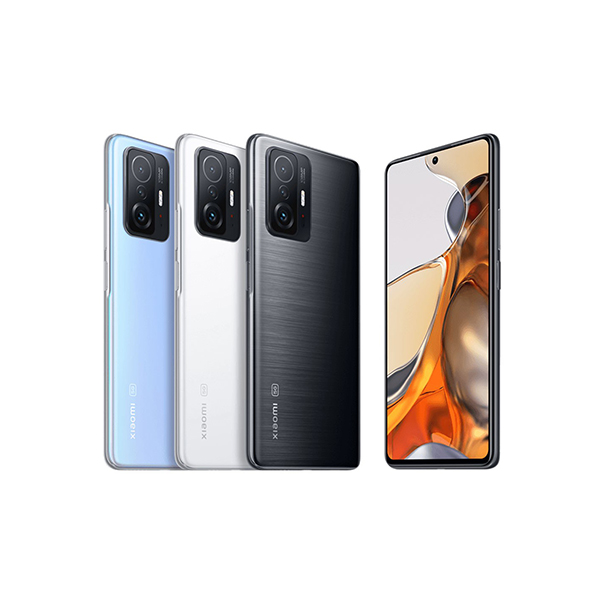
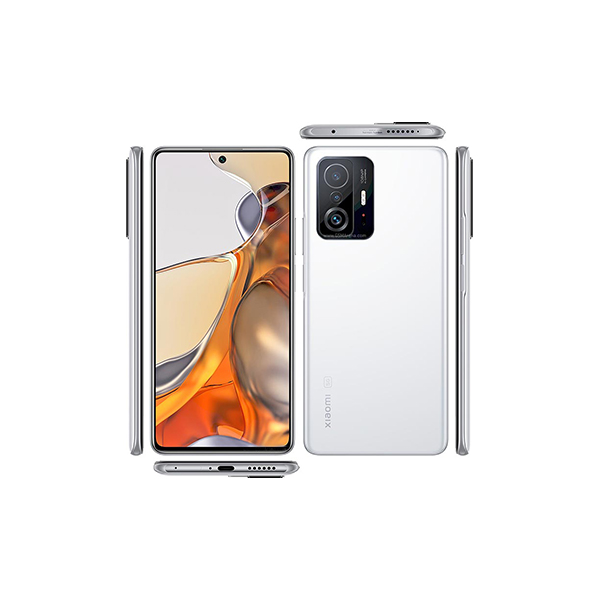








Specs
General
| Device Type | Xiaomi Redmi Phone |
| Announced | 15 September, 2021 |
| Released | 05 October, 2021 |
| Status | Available |
Design
| Water Resistant | No official IP rating |
| Dimensions | 164.1 x 76.9 x 8.8 mm |
| Weight | 203 g |
| Protection | Glass front (Gorilla Glass Victus), aluminum frame, glass back |
| Colors | Meteorite Gray, Moonlight White, Celestial Blue |
Display
| Refresh Rate | 120 Hz |
| Display Type Display Technology => A number of display technologies and types used in mobile phones => TFT (Thin Film Transistor), IPS (In-Place Switching), OLED (Organic Light Emitting Diode), AMOLED (Active-Matrix Organic Light-Emitting Diode), Super AMOLED (an even advanced version of AMOLED), Resistive Touchscreen (Resistive touchscreens contain two layer of conductive material with a very small gap between them which acts as a resistance), Capacitive Touchsceen (Capacitive touchscreen technology consists of a layer of glass coated with a transparent conductor) | AMOLED |
| Size | 6.67 inches |
| Resolution | 1080 x 2400 pixels |
| Display Colors Display Colors is refers to the number of different shades of colors that the screen is capable of displaying => 64K colors, 256K colors and 16 million colors, Obviously 16M is highest available range of colors and better than others. | 1B Colors |
| Pixel Density Pixel Density (PPI) is refers to the concentration of pixels on a particular display, measured in pixels per inch (ppi). Pixel density is calculated by dividing the diagonal pixel resolution of a display by its diagonal size, higher pixel density better display quality. | ~395 |
| Touch Screen | Capacitive Touchscreen, Multitouch |
| Display Protection Display Protection => Gorilla Glass is a special alkali-aluminosilicate glass shield with exceptional damage resistance that helps protect mobile displays from scratches, drops, and bumps of everyday use, It is always better to go for a smartphone with Gorilla Glass for that added protection and peace of mind. | Corning Gorilla Glass Victus |
| Features | HDR10+, 800 nits (typ), 1000 nits (peak) |
| Secondary Display | No |
Camera
| Front Camera | 16 MP, f/2.5, (wide), 1/3.06", 1.0µm |
| Camera Setup | Triple |
| Main Camera Camera is able to capture photographs and usually videos, The most important characteristics of a camera are the resolution (measured in megapixels), lens focus type (fixed or automatic), higher megapixel cameras are known to capture higher quality photos, but not always a good measurement of the photos quality. |
108 MP, f/1.8, 26mm (wide), 1/1.52", 0.7µm, PDAF 8 MP, f/2.2, 120˚ (ultrawide), 1/4.0", 1.12µm 5 MP, f/2.4, 50mm (telephoto macro), 1/5.0", 1.12µm, AF |
| Image | 8150 x 6150 Pixels |
| Video | 4K@30fps, 1080p@30/60/120, gyro-EIS |
| Camera Features | HDR10+, gyro-EIS |
| Flash Flash Light => There is commonly two types of flash lights are used in camera mobile phones, LED Flash (LED flash offers lower power consumption with drive circuitry that takes up very little room, LEDs can be strobed faster than any other light source), Xenon Flash (xenon flash produces an extremely intense full-spectrum white light for a very short duration) | Dual-LED dual-tone flash, HDR, panorama |
Hardware
| Operating System OS => Every computer system run on a base software called Operating System (OS). Operating System controls all basic operations of the computer (such as smartphone, PDAs, tablet computers and other handheld devices). The Operating System allows the user to install and run third party applications (apps), apps are used to add new functionality to the device. | Android 11 |
| Chipset Chipset is a group of integrated circuits designed to perform one or a more dedicated functions, often with real time computing constraints, Popular smartphones are equipped with more advanced embedded chipsets that can do many different tasks depending on their programming. | Mediatek Dimensity 1200 |
| CPU CPU (Central Processing Unit) mostly known as processors, CPU processes instructions in order to carry out certain functions that make your device operate properly. Processors are often described as the brain of computers, smartphones and tablets, Smartphones and tablets rely on processors to carry out their every task, Processors are an incredibly important factor in selecting any type of computing device, including your smartphone. | Octa-core (1x3.0 GHz Cortex-A78 & 3x2.6 GHz Cortex-A78 & 4x2.0 GHz Cortex-A55) |
| Architecture | 64 bit |
| Fabrication | 6 nm |
| GPU GPU (Graphics Processing Unit) is a single-chip processor designed to rapidly manipulate and alter memory to accelerate the creation of images in a frame buffer intended for output to a display, This includes things such as lighting effects, object transformations, and 3D motion. | Mali-G77 MC9 |
| RAM (Memory) RAM (Random Access Memory) is a type of computer memory that can be accessed randomly, any byte of memory can be accessed without touching the preceding bytes that allows information to be stored and accessed quickly from random locations. RAM is the most common type of memory found in computer systems, smartphones, tablets and other electronic devices. | 8 GB |
| Internal Storage Internal Storage is a data storage space (flash memory) mostly used in smartphones, tablets and other electronic devices where operating system, apps, music, photos, videos, files and other user data Is stored. | 128 GB |
| Card Slot Memory Card Slot is a special slot for inserting a memory card. Memory cards allow you to expand the phone's built-in memory, A memory card (sometimes called a flash memory card or a storage card) is a small storage medium used to store data such as text, pictures, audio, and video, for use on small, portable or remote computing devices such as mobile phones, mp3 players, digital cameras. | |
| Sensors Sensors are electronic components that detects and responds to some type of input from the physical environment. The specific input could be light, heat, motion, moisture, pressure and location, The output is generally a signal that is converted to use in computing systems, a location sensor, such as a GPS receiver is able to detect current location of your electronic device. | Accelerometer, Compass, Fingerprint (side mouned)), Gyro, Proximity |
Network
| SIM TYPE SIM (Subscriber Identity Module) is a small card that contains mobile network subscriber's account information. This allows the phone using the card to attach to a mobile network. The SIM card is most commonly associated with GSM and UMTS mobile networks. Moving a SIM card from one phone to another allows a subscriber to switch mobile phones without having to contact their mobile network carrier. SIM cards can also be used by a phone to store limited amounts of data, such as phone numbers and text messages. | Nano SIM |
| SIM Technology | Dual Sim, Dual Standby (Nano-SIM) |
| 2G Network | GSM 850 / 900 / 1800 / 1900 |
| 3G Network | HSDPA 850 / 900 / 1700(AWS) / 1900 / 2100 |
| 4G Network | LTE band 1(2100), 3(1800), 7(2600), 8(900), 20(800) |
| 5G Network | 5G SA/NSA |
Multimedia
| FM Radio | |
| Stereo Speakers | YES |
| Loudspeaker | YES |
| Audio Features | 24-bit/192kHz audio (Tuned by Harman Kardo) |
Connectivity
| Wi-fi Wi-Fi is a popular wireless networking technology using radio waves to provide high-speed network connections that allows devices to communicate without cords or cables, Wi-Fi is increasingly becoming the preferred mode of internet connectivity all over the world. | Wi-Fi 802.11 a/b/g/n/ac, dual-band, Wi-Fi Direct |
| Bluetooth Bluetooth is a wireless communications technology for exchanging data between mobile phones, headsets, computers and other network devices over short distances without wires, Bluetooth technology was primarily designed to support simple wireless networking of personal consumer devices. | v5.2 with A2DP, LE, apt-X HD, aptX Adaptive |
| GPS GPS The Global Positioning System is a satellite-based radio navigation system, GPS permits users to determine their position, velocity and the time 24 hours a day, in all weather, anywhere in the world, In order to locate your position, your device or GPS receiver must have a clear view of the sky. | tri-band A-GPS with GLONASS, BDS, GALILEO |
| USB | USB Type-C 2.0, USB On-The-Go |
| EDGE EDGE (Enhanced Data GSM Environment) is a wireless network technology generally considered the next step in the 2G network offers data transfer rates up to four times faster than ordinary GSM networks, Generally, EDGE is used for the purpose of wireless data transfer, such as sharing pictures and videos or browsing the Internet via a mobile phone connection. | |
| GPRS GPRS (General Packet Radio Service) is a packet oriented mobile data service on the 2G and 3G cellular communication system's global system for mobile communications (GSM), Generally, GPRS is used for the purpose of wireless data transfer, such as sharing pictures and videos or browsing the Internet via a mobile phone connection. | |
| Speed | 3G (HSPA 42.2/5.76 Mbp), LTE-A, 5G capable |
| Wi-fi Hotspot | |
| NFC NFC (Near field communication) is a set of standards for smartphones and similar devices to establish peer-to-peer radio communications with each other by touching them together or bringing them into proximity, usually no more than a few inches. |
Features
| Messaging | SMS(threaded view), MMS, Email, Push Mail, IM |
| Web Browser Web Browser => a web browser is a software application used to locate, retrieve and display content on the World Wide Web, including Web pages, images, video and other files, The primary function of a web browser is to render HTML, the code used to design or markup webpages. | HTML5 |
| Games | Built-in + Downloadable |
| Torch |
Battery
| Battery Type Battery Type => Cell phones run on various kinds of batteries depending on the manufacturer, phone size or shape and features. There are basically four types of cell phone batteries => Lithium Polymer, Lithium Ion, Nickel Metal Hydride and Nickel Cadmium. | Li-Ion (Lithium Ion) |
| Capacity Battery Capacity is a measure (typically in Amp-hr) of the charge stored by the battery, and is determined by the mass of active material contained in the battery. The battery capacity represents the maximum amount of energy that can be extracted from the battery under certain conditions. | 5000 mAh |
| Placement | Non-removable |
| Wireless Charging Wireless Charging (Inductive Charging) uses an electromagnetic field to transfer energy between two objects. This is usually done with a charging station. Energy is sent through an inductive coupling to an electrical device, which can then use that energy to charge batteries or run the device. | No |
| Extra |
Fast charging 67W 100% in 36 min (advertised) |
Xiaomi 11T Detailed Review
Introduction: The Xiaomi 11T, released in 2021, is positioned as a value-oriented premium smartphone with a focus on performance and camera capabilities. It is part of Xiaomi’s T-series lineup, offering many flagship features at a more affordable price than the top-tier Mi or 11T Pro models. The 11T delivers impressive specifications, such as a 120Hz AMOLED display, 108MP camera, and 67W fast charging. In this review, we’ll dive into the key features, performance, and the overall experience of using the Xiaomi 11T, while also highlighting its pros and cons.
Specifications at a Glance
- Display: 6.67-inch AMOLED, 120Hz, FHD+ (2400 x 1080) resolution
- Processor: MediaTek Dimensity 1200-Ultra (6nm)
- RAM: 8 GB
- Storage Options: 128 GB, 256 GB UFS 3.1
- Rear Cameras: Triple system – 108 MP (wide), 8 MP (ultra-wide), 5 MP (telemacro)
- Front Camera: 16 MP (f/2.5)
- Battery: 5000 mAh with 67W fast charging
- Operating System: MIUI 12.5 (based on Android 11)
- Audio: Dual stereo speakers, no 3.5mm headphone jack
- Dimensions: 164.1 x 76.9 x 8.8 mm
- Weight: 203 grams
Design and Build Quality
Aesthetics:
- Premium Feel: The Xiaomi 11T has a sleek and modern design with a glass back and aluminum frame. The glossy back finish looks premium, though it is prone to fingerprints and smudges.
- Color Options: It comes in three color variants:
- Meteorite Gray
- Moonlight White
- Celestial Blue
These colors add a touch of elegance and cater to different aesthetic preferences.
Build Quality:
- Durability: While the device feels sturdy, the glass back and frame could be vulnerable to scratches and drops. It has an IP53 rating, which offers splash and dust resistance but is not fully waterproof.
- Button Placement and Ergonomics: The side-mounted fingerprint sensor integrated into the power button is fast and conveniently placed. The volume rockers are easy to reach as well.
Overall, the Xiaomi 11T offers a premium design at an affordable price, though its large size may not appeal to users looking for a more compact device.
Display
Specifications:
- Type: 6.67-inch AMOLED
- Resolution: 2400 x 1080 (FHD+)
- Refresh Rate: 120Hz
- Peak Brightness: 1000 nits
- HDR10+ Support: Yes
Performance:
- Smooth and Vibrant: The 120Hz refresh rate ensures fluid scrolling and an overall smooth user experience, especially for gaming and multitasking. The AMOLED panel delivers vibrant colors with deep blacks, making it ideal for media consumption.
- Outdoor Visibility: With a peak brightness of 1000 nits, the Xiaomi 11T is easily viewable under direct sunlight.
- Color Accuracy: The display offers great color accuracy, and HDR10+ support enhances the experience when watching high-definition content on platforms like Netflix and YouTube.
In summary, the Xiaomi 11T’s display is a highlight, offering excellent quality, smooth performance, and high brightness, making it suitable for media enthusiasts and gamers alike.
Performance
Hardware:
- Processor: MediaTek Dimensity 1200-Ultra (6nm) – an octa-core chipset
- RAM: 8 GB
- Storage: 128 GB / 256 GB UFS 3.1
Performance Evaluation:
- Everyday Usage: The MediaTek Dimensity 1200-Ultra chip, combined with 8 GB of RAM, delivers solid performance in everyday tasks, including multitasking, social media, and app switching. The phone rarely shows signs of lag, and apps open quickly.
- Gaming: The Dimensity 1200-Ultra provides ample power for gaming, running games like Genshin Impact and PUBG Mobile smoothly at high settings. The 120Hz refresh rate also enhances the gaming experience.
- Thermal Management: The device remains cool during typical usage, but extended gaming or using resource-heavy apps can cause it to heat up slightly, though not excessively.
Overall, the Xiaomi 11T offers excellent performance for its price point, with a powerful processor and fast storage that ensures smooth everyday use and capable gaming.
Camera
Rear Camera System:
- Primary Camera: 108 MP (f/1.8), PDAF
- Ultra-Wide Camera: 8 MP (f/2.2), 120° field of view
- Telemacro Camera: 5 MP (f/2.4), 2x optical zoom
Camera Performance:
- Daylight Photography: The 108 MP main camera captures excellent photos in good lighting, with vibrant colors, sharp details, and good dynamic range. The high resolution allows for detailed zooming or cropping of images without significant loss of quality.
- Low-Light Photography: In low-light conditions, the camera performs decently, but it struggles with noise in extremely dark environments. The Night Mode helps enhance detail and reduces noise, though it isn’t as good as some flagship devices.
- Ultra-Wide Camera: The 8 MP ultra-wide camera is serviceable, capturing a wider field of view but with some distortion at the edges and a noticeable drop in detail compared to the primary sensor.
- Telemacro Camera: The 5 MP telemacro lens is unique, allowing for close-up shots with impressive detail. However, its utility in day-to-day photography is limited compared to telephoto lenses found on other smartphones.
Video:
- Recording Capabilities: The Xiaomi 11T can record in up to 4K at 30 fps and offers good stabilization, making it suitable for capturing smooth video. The phone also supports slow-motion video up to 960 fps at 1080p resolution.
- Video Performance: Videos shot on the Xiaomi 11T offer vibrant colors and decent dynamic range, though the quality of 4K videos may not be as sharp as what you’d expect from higher-end flagships.
Front Camera:
- Resolution: 16 MP (f/2.5)
- Performance: The 16 MP front camera is decent for selfies in well-lit conditions, offering good skin tones and detail. However, in low light, it tends to struggle with noise and lower sharpness.
Overall, the Xiaomi 11T’s camera system is versatile and performs well in most conditions, with the 108 MP main sensor being the standout. However, the ultra-wide and macro lenses are more situational.
Battery Life
Specifications:
- Battery Capacity: 5000 mAh
- Charging: 67W wired fast charging (no wireless charging)
Battery Performance:
- All-Day Usage: The 5000 mAh battery comfortably lasts through a full day of heavy use, including gaming, video streaming, and web browsing.
- Fast Charging: The 67W fast charging is a standout feature, charging the phone from 0 to 100% in around 35-40 minutes, which is incredibly convenient for users on the go.
- Power Efficiency: The Dimensity 1200 chip is efficient, ensuring that the phone optimizes battery usage well, even when running demanding apps or games.
In summary, the Xiaomi 11T offers impressive battery life and fast charging capabilities, making it ideal for users who need a phone that can last all day with minimal downtime.
Software
Operating System:
- MIUI 12.5 (based on Android 11): Xiaomi’s MIUI skin provides a highly customizable Android experience, with a wide array of features and tweaks. It’s responsive and offers various themes and visual customizations. However, some users might find the presence of bloatware and ads in the UI annoying.
Features:
- Always-On Display: Thanks to the AMOLED display, the Xiaomi 11T supports an always-on display, allowing users to see notifications, time, and battery information without waking up the phone.
- Customization: MIUI allows for deep customization, including themes, app layouts, gestures, and more, catering to users who enjoy personalizing their phones.
- Updates: Xiaomi has been improving its track record for software updates, though its update frequency may still lag behind competitors like Google or OnePlus.
Overall, MIUI on the Xiaomi 11T offers a feature-rich experience, but some users may be put off by bloatware or ads.
Pros & Cons
Pros:
- Powerful Performance: The MediaTek Dimensity 1200-Ultra chip delivers excellent performance for gaming, multitasking, and everyday use.
- Vibrant 120Hz AMOLED Display: The display is sharp, smooth, and bright, making it ideal for media consumption and gaming.
- Impressive Main Camera: The 108 MP primary camera takes detailed and vibrant photos in good lighting conditions.
- Fast Charging: 67W fast charging is a standout feature, offering a full charge in around 40 minutes.
- Solid Battery Life: The 5000 mAh battery ensures all-day battery life, even with heavy usage.
Cons:
- No Wireless Charging: Unlike some competitors in the same price range, the Xiaomi 11T does not support wireless charging.
- Ultra-Wide and Macro Cameras: The secondary lenses are less impressive than the main camera, with the ultra-wide suffering from reduced detail and the macro being niche in its application.
- No 3.5mm Jack: Like many modern smartphones, the Xiaomi 11T does not have a headphone jack, which may be a downside for audiophiles.
- MIUI Bloatware and Ads: The presence of bloatware and occasional ads in the software can detract from the overall user experience.
- Limited Water Resistance: With only an IP53 rating, the phone is protected against splashes but not fully waterproof.

Conclusion
The Xiaomi 11T offers a fantastic balance of performance, display quality, and battery life, all wrapped in a premium design at an affordable price. The 108 MP camera is a standout, especially for users who enjoy mobile photography, while the 120Hz AMOLED display enhances both everyday use and media consumption.
However, the absence of wireless charging, a headphone jack, and MIUI’s software quirks may turn some users away. Overall, it is an excellent choice for those looking for a high-performing smartphone that doesn’t break the bank, but it isn’t without its minor drawbacks.
Review
Disclaimer Note
All prices in Pakistan is updated daily from the price list provided by local shops and dealers but we can not guarantee that the information / price on this page is 100% correct (Human error is possible), always visit your local shop for exact cell phone cost & rate.
